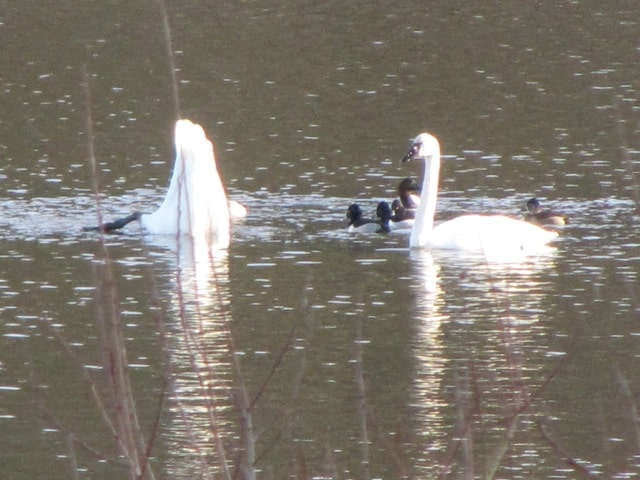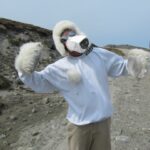
January is a great month for finding rarities on the coast. We’re talking birds here. In other blogs, I make reference to plants as well, since they are very useful in holding birds up, feeding them and giving them a place to nest. Otherwise, plants don’t seem to serve much purpose on our planet – at least any that I can discern.
So, back to the really important biota: birds. I shan’t dwell too much on identifying and giving long descriptions – just google them or better yet, dig out your favourite bird book.
To punctuate my point about rarities, on Jan 4, 2016, here in Victoria, I went out with my old, ancient, friend Michael Shepard (met as BC Park naturalists in 1970) on a quest for some special birds. Not just trash birds, but birds that are supposed to be much farther south, or north, than Victoria – the “good stuff”- the RARE ONES. The ones that take a wrong turn at the Aleutians, or get blown off course across the prairies, or fall in with the wrong crowd and get taken astray. For us it’s an excuse to go to Starbucks, a habitat that Michael loves to frequent, to discuss the plight of humankind, which is incorrigible by all accounts, and figure out how to get our next jobs as naturalists. Michael had just turned down a couple of gigs in South Georgia. I digress.
Now, we are “listers”. If you are not familiar with this subspecies of human, ask Christian Gronau. Or, well, we are something like this: the MOMENT we see the bird we are after, we immediately turn around and walk away, on to the next quest, maybe take a picture, if time allows. Once put on the list, it’s done. It goes on the “year list” or “month list” or better yet, our “Life List”, and we can relax and sip coffee in our gas-guzzling 4X4, then drive off to the next rarity. But I should add that Michael’s list of birds, seen from his bike in Victoria, is massive!
You may be disturbed by our antics…but relax…we’re not even as keen as the worst of the lot out here. Take, for example, the people who are coming from Vancouver and other parts of North America to see the ‘Redwing’ that has fallen into a Holly tree in Victoria. Supposedly:
“The species breeds from Iceland east through northern and eastern Europe and across much of Siberia, and winters in western and southern Europe, North Africa, around the Black and Caspian Sea basins and in adjacent south-west Asia” – http://www.birdlife.org/datazone/speciesfactsheet.php?id=6406
Meanwhile in Victoria, which is not very close to the Black Sea, there are accounts of unsuccessful listers taking the ferry to Victoria 3 times from Vancouver only to yield nothing but piles from sitting for 8 hrs in the cold, waiting, in the hopes of seeing the Redwing flash across the road to yet another holly bush.
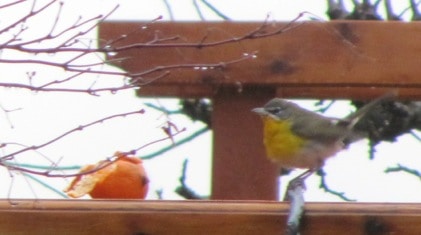
But Michael and I are far above this sort of torture. We want, expect, and execute perfect instant gratification. After all, Michael got the Redwing on “last year’s list” (Dec.20) when it flew over his head, and I saw it in Rupert Sheldrake’s back yard in Hampstead Heath, London. Both of us are aloof. But…fear the worst…these other listers will cut down this holly tree, lay enough food out in the open to feed a refugee camp for a month, install motion detectors, fly hover drones with infra-red sensors and video monitors all in the quest to GET IT ON THE LIST. And not just on “last year’s list” but for 2016! And if I dare retort that I saw it in England in 1990 they will go pale in bewilderment as to how I could be so imperfect!
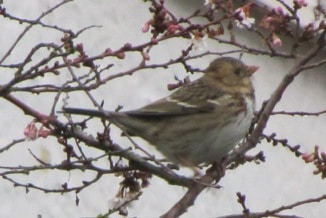
Meanwhile, back to us sucking on our Starbucks, we managed to nail the Yellow-breasted Chat (supposed to be in Baja), and yes, there is SUCH a bird, and topped it off with a Harris’s Sparrow (Mississippi Valley), both in under 5 minutes, hardly enough time to let the coffee get cold.
But this blog for CIMAS is not about birding in Victoria or the Black Sea, but about you. You are to be on the lookout for rarities on Cortez Island. So, let’s get on with the show. My whole point of such stories about birding is only to put into perspective how important it is to some people, and perhaps, to infect you.
First of all, be on the look out for a Harlan’s Hawk. I shall post its picture at the end of this report. But what you are looking for is a Red-tailed Hawk, charcoal grey all over, and has a pale grey tail with a darkish band. The species one could confuse it with is the dark phase Rough-legged Hawk, but it has longer wings and a very large white band on the base of the black tipped tail. I saw the Harlan’s at Bartholomew Rd near the Hank’s beach parking lot on Dec 21 and there’s a good chance it was seen in Seaford on New Year’s. It will roam the whole island in search of small mammals.
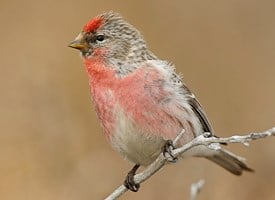
If you don’t have a bird feeder out, get some seeds and at least throw some on the ground, because the next one is best seen at a feeder – the Common Redpoll. Redpolls are small finches, about the size of Pine Siskins but with a bright red ‘cherry’ on their forehead, streaked brown and white otherwise. Cute and pretty! Then comes the Pine Grosbeak , smaller than a Robin with a pink wash over the front end and a very large bill. Nancy and Ray got one in Cortes Bay a few years back. I saw one near Larsen’s Meadow 20 years ago.
Northern Shrike is next on your ‘most wanted’ list. It’s grey all over with a “Lone Ranger” mask, smaller than a Robin. It stands upright, displaying white flashes in flight and best seen near fields; Linnaea, Manson’s farm, the Loon ranch, even Potlatch Rd. They are infamous for ‘spiking’ birds and mice on thorny bushes like Hawthorne for future meals and for males to generally show off to their mate. Another to look out for is the Bohemian Waxwing. It’s like our summer resident, the Cedar Waxwing, but larger and the ‘under tail coverts’ (the area under the tail) is a deep red. Look for them anywhere there are overwintering berries – Hawthorne, Holly, ornamentals. These birds have escaped the deep cold that is currently sweeping across the interior of BC. Then be suspicious of odd sparrows…White-throated, Harris’s, Lincoln’s, even White-crowned would be a treat this time of year.
Finally, if you get a rare bird – take a picture! Even a ‘dot’ can tell a lot about the bird. Always expect the unexpected – be suspicious…there’s ‘good stuff’ out there…you are the only one who can find it and pass the news on. When I was 16, I met Bill Hughes in South Vancouver, an old fashioned ‘birder’. Which means if a rare bird turned up in his back yard it suddenly became dead. Like the Ash-throated Flycatcher he caught in his mist net, (yes, you could get those great bird catching devices back in the good old days!) promptly stopped its heart, and made a scientific skin out of it. Back then the first definition in the Oxford Dictionary under ‘birder’ was, “a person who hunts birds”. Now it’s “a bird-watcher”. Use your camera, skip the mist net. Bill taught me how to stuff birds, but once again I digress.
And to continue to drone on and on, I want to add a quote from the very man who gave me my first job as a Park naturalist on Mitlenatch Island back in 1969 (!), the venerable David Stirling (who’s closer to a 100 than 90!) who read my draft of this blog and gave me a proper beating…I share this with you, too…
“Hello George,
Read your blog but you didn’t explain the details of identification. Field marks are a must! Especially if you have really found a rare avis and want others to believe you.
Here are 3 examples:
Small boy to mother, “what is that bird on the path with the golden crown.”
Mother, Any other field marks?
Small boy, Yes, it is small and round.
Well that eliminates the Golden-crowned Sparrow. Must be a Golden-crowned Kinglet. G-c Kinglets are often seen on paths and trails gleaning small stuff from twigs and branches after a wind storm.
Visitor returned from Florida: While lying on the beach, I looked up and saw this great mother-of-a-bird which then dropped like a ton of shite into the sea.
Excellent description of a Brown Pelican!
Just returned from Maui: I saw puffins in Maui.
Puffins in Hawaii???
Yes, they were on my balcony every morning!
Field guide pictures needed
Yes, there it is!
A Java Sparrow!
Cheers!
David”
I obviously cannot escape from my mentors…. If you ever want to ask me about a sighting, drop me a note – I’ll do my best not to laugh at you! Remember to use the Cortes Bird List that Fred Zwickel, Christian Gronau, and I published. It’s invaluable for separating the trash from the good stuff.
So till next month – try being a Lister for a day and see how many species you can get…remember, once you see it – walk away and go for MORE!!!!

